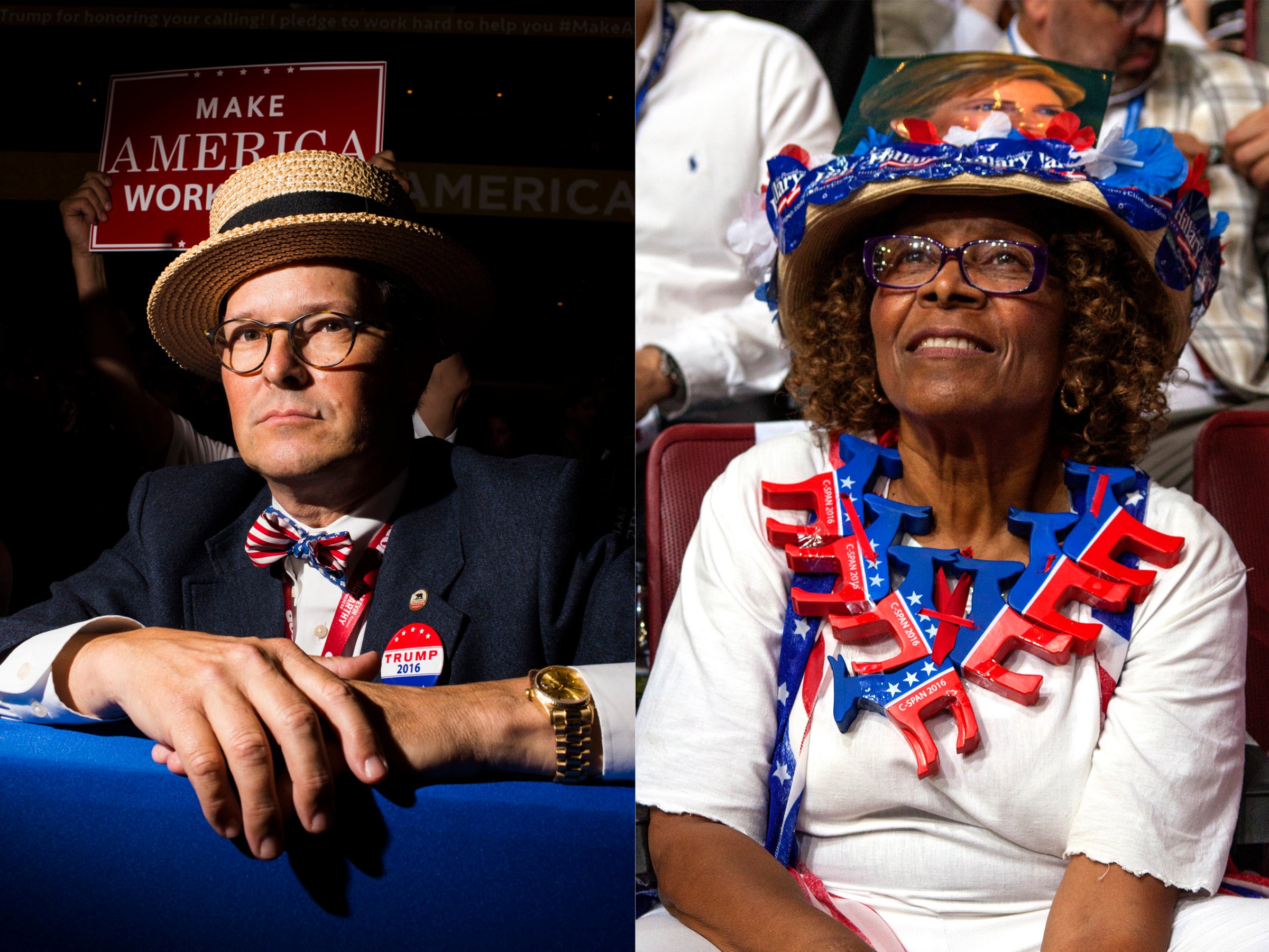
Heading into the 2016 election, Republicans and Democrats are more different from each other in key demographic characteristics than any time in the past 25 years.
According to a new study by Pew Research, the nation’s two major political parties are diverging in key areas like race, age, religion and education. The Democratic Party is becoming more diverse, less religious, younger and better educated than the nation as a whole, while the Republican Party trends the opposite way: whiter, more religious, older and less educated than the country overall.
Here’s a breakdown of some of the main trends.
Diversity
The United States has become increasingly racially and ethnically diverse since 1992, but the change has been much more pronounced among Democrats. In 1992, 76% of Democratic and Democratic-leaning voters were white, 17% were black and 6% were Hispanic. Now, only 57% are white, 21% are black, and the share of Hispanics has doubled to 12%.
The diversification among Republicans has been much slower. In 1992, 93% of Republicans were white, 3% were Hispanic and 2% were black. Now, the party is 86% white. The share of blacks is unchanged at 2%, and while the share of Hispanics has also doubled, they still make up just 6% of Republicans, half of what they constitute in the Democratic party.
Religion
Since 1996, there has been a large increase in the United States of voters who do not identify with a religious group, from 8% to 21%. The Democratic Party reflects that change (at even a slightly faster pace), now with 29% of Democrats or Democratic-leaners describing themselves as atheist, agnostic or “nothing in particular.” 8% of Democrats are white evangelical Protestants.
Republicans, on the other hand, remain more religious than the country as a whole. Just 12% of Republicans are religiously unaffiliated, 9 percentage points less than the national average. And about one-third of Republicans are white evangelical protestants (35%), about four times more than their share of Democrats.
Age
In 1992, the Republican Party had a younger average age than the Democratic Party. Now, as the country overall as aged, it is reversed: 41% of Republicans in 2016 are younger than age 50, compared to 51% of Democrats.
Education
The parties have also flipped trends in education. In 1992, Republicans were on average better educated than Democrats. Now, while registered voters overall have become more educated, the share of Republicans with a college degree has increased from 28% in 1992 to 31% in 2016. Not only do Democrats now have a higher share of voters with a college degree, but they experienced a much sharper increase: the share jumped from 21% in 1992 to 37% in 2016.
The new Pew results are based on 253 surveys and more than 340,000 interviews of registered voters conducted from January 1992 to August 2016.
More Must-Reads From TIME
- The 100 Most Influential People of 2024
- The Revolution of Yulia Navalnaya
- 6 Compliments That Land Every Time
- What's the Deal With the Bitcoin Halving?
- If You're Dating Right Now , You're Brave: Column
- The AI That Could Heal a Divided Internet
- Fallout Is a Brilliant Model for the Future of Video Game Adaptations
- Want Weekly Recs on What to Watch, Read, and More? Sign Up for Worth Your Time
Write to Tessa Berenson at tessa.Rogers@time.com